Indian Company Develops Autonomous Wide Area Counter-Unmanned Aircraft System (C-UAS)
By Umang Kohli
Hyderabad. Grene Robotics, an Indian company, says it has developed the world’s only autonomous wide area anti-drone/ Counter Unmanned Aircraft System (C-UAS), and gave a live demonstration on December 2 in the presence of Uttarakhand Governor Lt Gen Gurmit Singh and several media representatives including this writer.
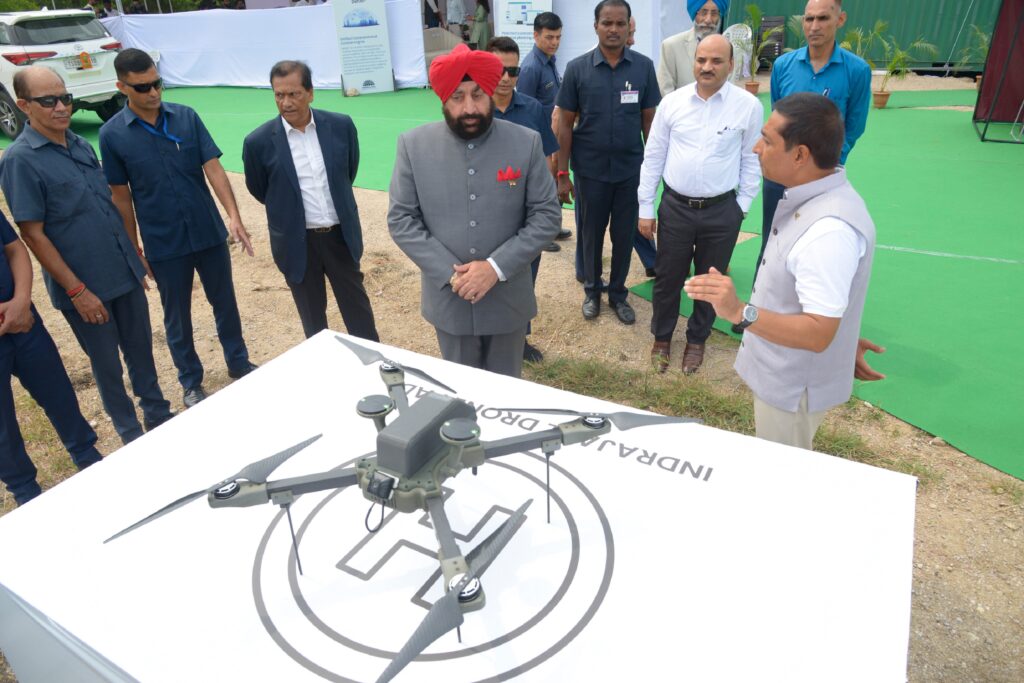
Designated Indrajaal, the sophisticated system detected two hostile drones, a bit bigger than Quadcopters, and actually brought down one by Jamming its communications and the other by itself hitting the target directly in a Kamikaze strike. It was quite impressive, and company Director Wg Cdr MVN Sai (Retd) said the system could “protect against micro, mini, small, large and extra-large drone classifications, revolutionizing security measures for a safer future.” Demonstrations are to be held now for the Ministry of Defence and Armed Forces. Indrajaaal can operate from a surface-based control centre, and with its array of computers and TV monitors, scan a large area and direct its Predator like flying machines against the infiltrating hostile drones, including those used in swarm attacks.
Lt Gen Gurmit Singh observed that the demonstration “marks a groundbreaking advancement in defence technology that is set to reshape the security landscape for defence, public infrastructure, and private sectors. This system will not only enhance our nation’s self-reliant military capabilities but also address the urgent need of the hour to defend against the increasing threat of drones.”
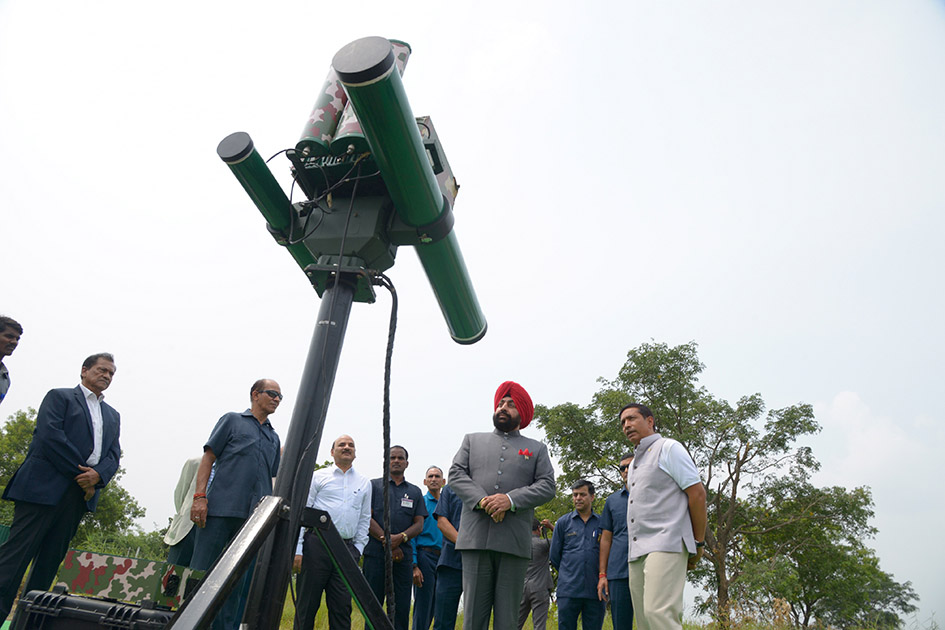
The Hyderabad-based Grene Robotics is now set to make presentations to the Ministry of Defence and Armed Forces officers at different locations in the country saying the advanced Indrajaal “marks a pivotal moment in the history of Indian defence technology as the world’s only anti-drone system” of its type.
Indrajaal’s design principle leverages a LEGO block-like combination mechanism of 12 unique layers of technology powered by Artificial Intelligence. The system has the ability to detect, identify, classify, track, and swiftly neutralize threats in real time, making it a formidable force in the field.
According to a company statement, “With 360-degree protection, Indrajaal™ can cover vast areas of up to 4,000 sq. km and provide a comprehensive framework to defend against all classifications and levels of autonomous drones. From low RCS threats to Medium and High-Altitude Long Endurance (MALE & HALE) UAVs, loitering munitions, smart bombs, rocket showers, nano and micro drones, swarm drones, and more, Indrajaal™ can protect against all categories of ariel threats.”
Wg Cdr Sai told India Strategic that the system was planned around “centralized control with distributed sensor deployment” and that the strike systems could be Jammers, Existing Missiles, and Kinetic Weapons.
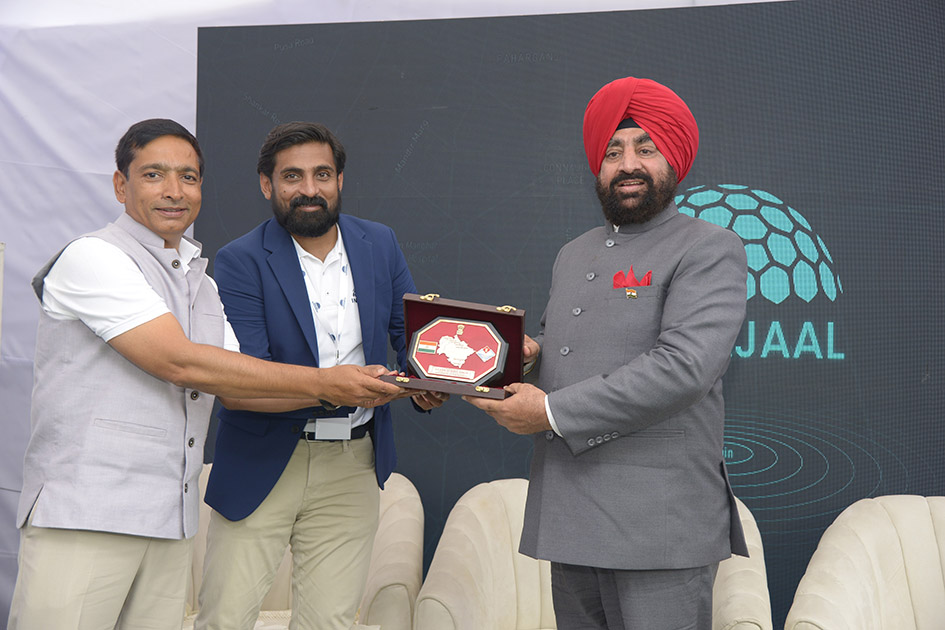
The Escalating Drone Threat
Autonomous Defence/Weapon Systems are the 3rd revolution of warfare, and over the past two years, India has encountered a significant surge in hostile UAV activity from Pakistan. The country’s defence forces have detected several attempts to drop weapons, money and narcotics into the country. Intelligence reports have indicated that Pakistan’s ISI spy agency, employs them for dropping weapons and narcotics into India’s Jammu and Punjab regions.
Pakistan’s drone missions appear to have three primary objectives: surveillance of Indian security forces, narcotics smuggling, and distributing weapons within Indian territory. Disturbingly, there has been a steady increase in drone-based weapon deliveries, with 76 cases reported in 2020, 109 in 2021, 266 in 2022, and approximately 200 cases in 2023 alone. This concerning upsurge emphasizes the urgent need for heightened vigilance and the implementation of effective countermeasures to safeguard national security.
Limitations of current deployments
- The future skies will have more friendly drones than threats
- Stand-alone systems are not scalable and not even practical
- Only radar-based detections are inaccurate at low RCS and close to the ground. They are even incapable of identifying the operating radio frequency
- Jamming can only delay, but cannot stop an attack
- Laser weapons require a large non-moving target
- There is no countermeasure to mitigate a swarm attack
Existing point defence-based anti-UAV systems are inadequate against drone threats as they rely on physical sighting. They can’t protect large defence bases, areas like the National Capital Region of New Delhi which contains several critically important buildings, international borders, and other sensitive regions against UAVs, low RCS missiles, smart munitions and swarm drones.
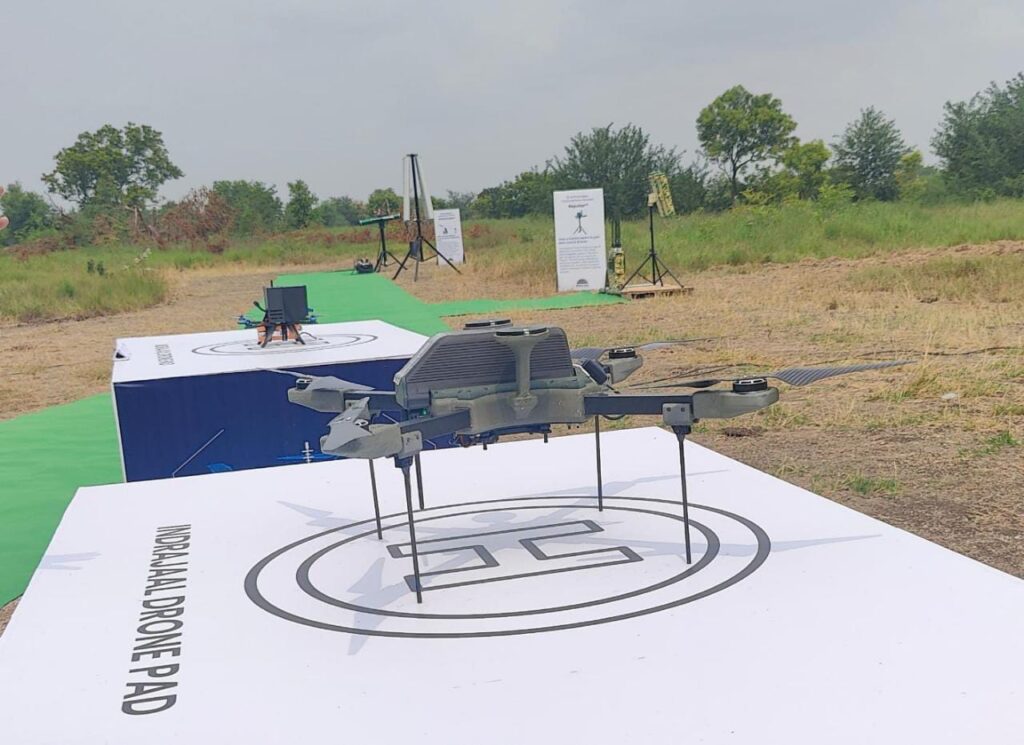
Indrajaal™ mitigates these limitations by combining these 12 proprietary, modular, technologies.
- greneOSⓇ – Patented Autonomous Resource Planning Engine
- DefOSⓇ – Unified Command and Control Engine
- HiveMind™ – AI Computer that can plan and execute missions
- Zombee ™Drone – Level 5 autonomous drones that can kill threats
- SkyCop™ Drone – Level 5 autonomous drone that can watch threats
- Brig™ Device – Edge AI smart data and control device
- SpiderMesh™ – High-speed wireless mesh network covering up to 4000 sq. km.
- Repulsor™ – Uses a tractor beam to jam and control drones
- greneEYEⓇ – Uses machine vision to identify threats
- HyperSensing™ – A potent mix of sensing technologies
- WeaponFusion™ – Make existing weapons autonomous by integrating them
- GlobalGrid™ – Unified real-time command and control interface
Wg Cdr Sai, Director Grene Robotics & Co-Founder, said, “As the demonstration of Indrajaal™ commences, we are happy to be creating history in the era of autonomous drone security. The integration of 12 proprietary technologies in a comprehensive network sets Indrajaal™ apart as the world’s most advanced full-spectrum drone security system. Our team’s dedication and perseverance have led us to this remarkable moment, and we are confident that Indrajaal™ will demonstrate its unparalleled capabilities in fighting modern threats effectively.” The trial is happening at the 79-acre test facility in Hyderabad.
Kiran Raju, Founder & CEO, Grene Robotics Grene Robotics said, “Indrajaal stands as a cornerstone product in the realm of autonomous defence solutions for India. It marks a momentous achievement for Grene Robotics, and we take immense pride in spearheading the effort to fortify our nation against ever-evolving threats.”
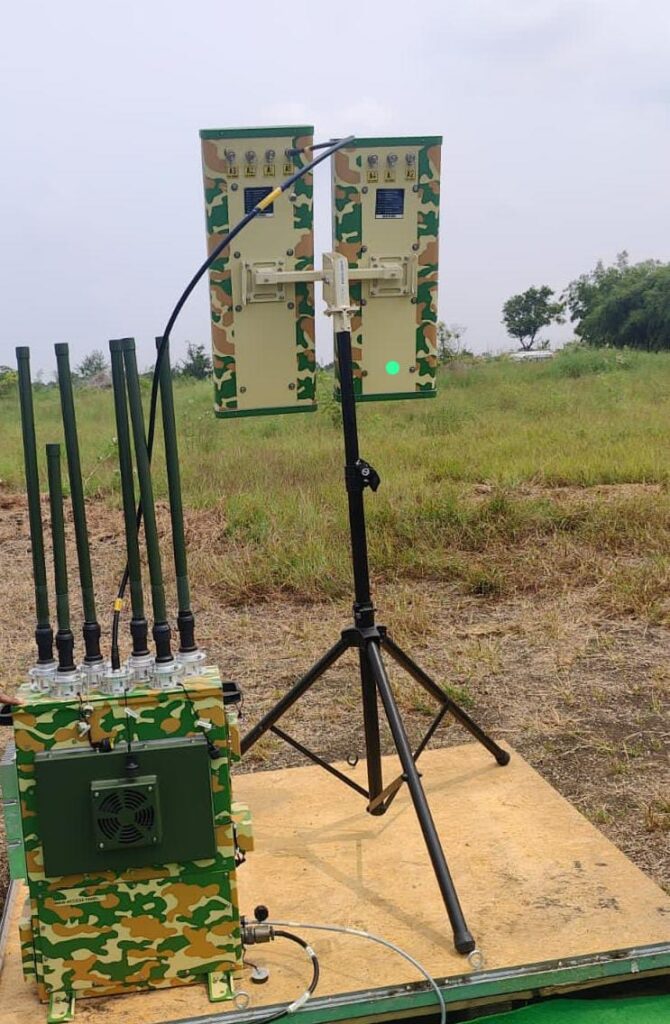
About Indrajaal
Autonomous Defence/Weapon Systems are the 3rd revolution of warfare and Indrajaal™ is the world’s only autonomous AI-powered wide area Counter-Unmanned Aircraft System (C-UAS) that has captured the attention of experts worldwide. The system’s design principle leverages a combination of 12 unique layers of technologies powered by artificial intelligence. Indrajaal can identify threats, classify them, track them, determine the course of action and neutralize these threats in real time.
About Grene Robotics:
Grene Robotics is a cutting-edge, deep-tech research and development company specialising in providing innovative solutions in Artificial Intelligence and Robotics. The company focuses on developing AI-driven autonomic systems for the defence, enterprise, and government sectors. These systems are designed to be self-managing and capable of learning from their environments, allowing them to dynamically evolve and adapt to changing circumstances.





